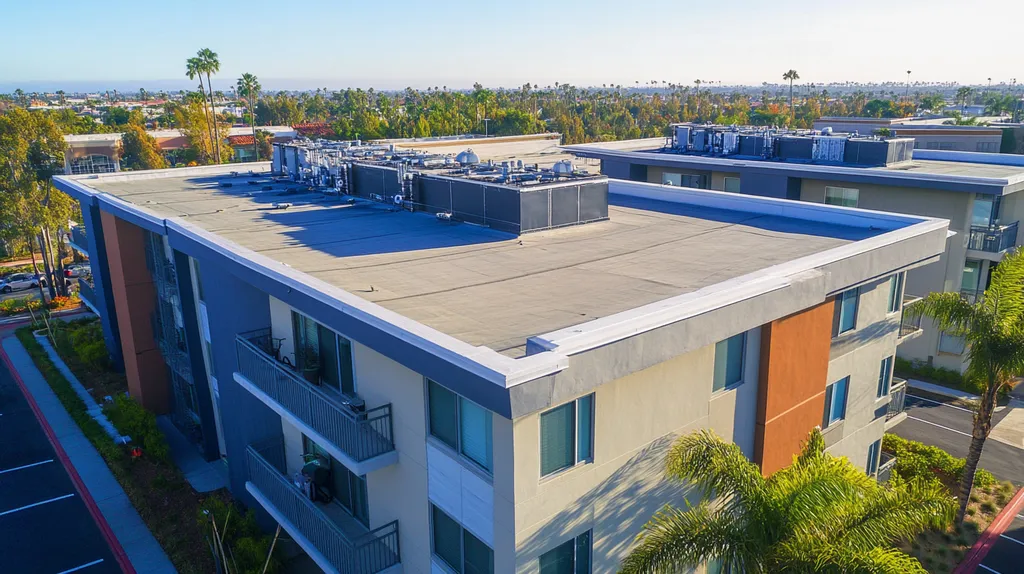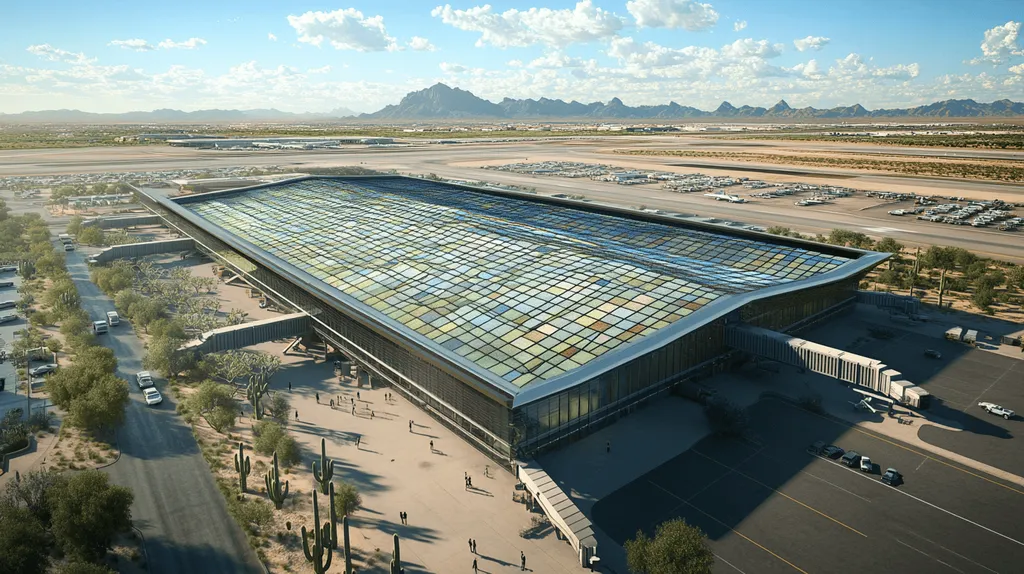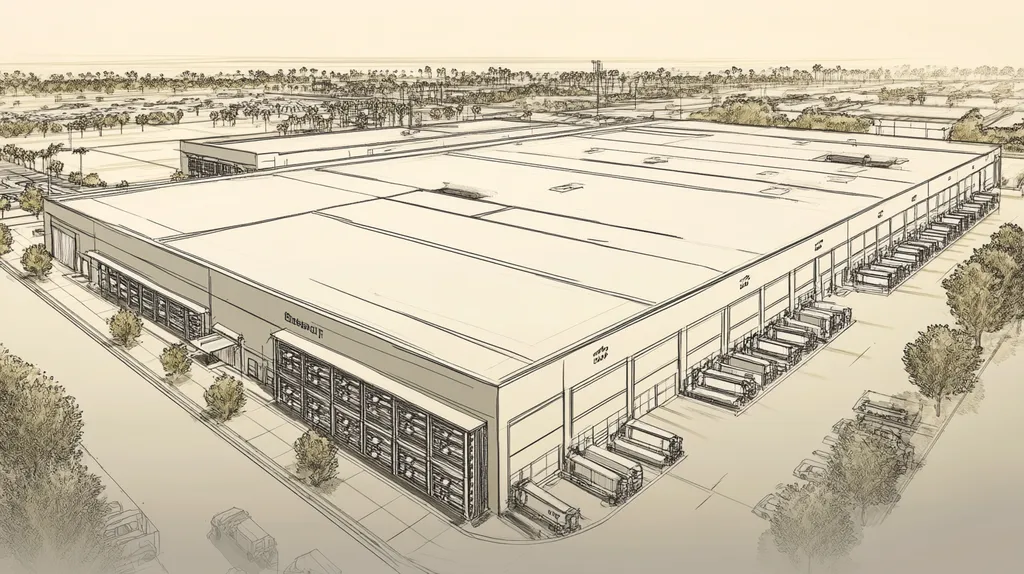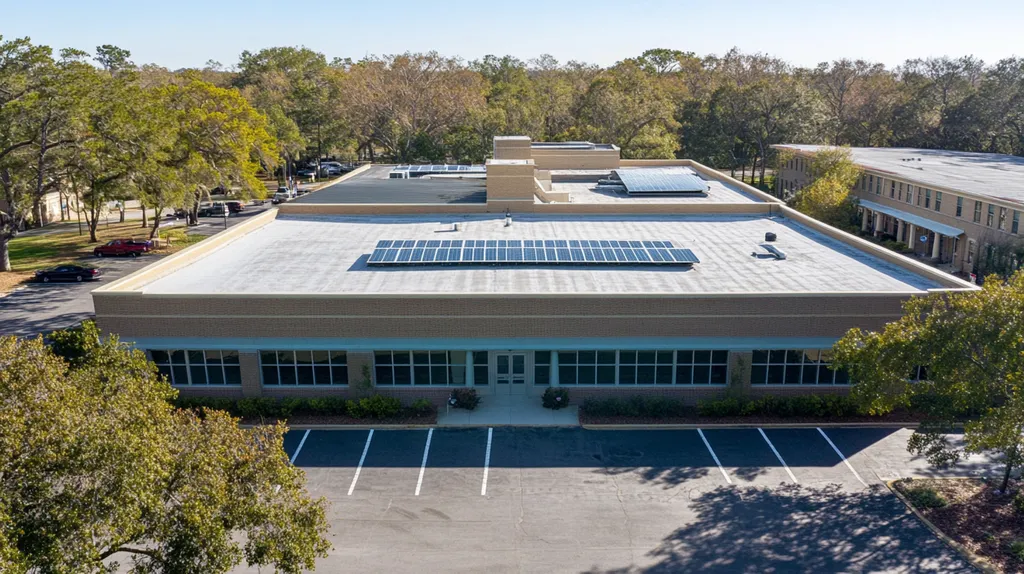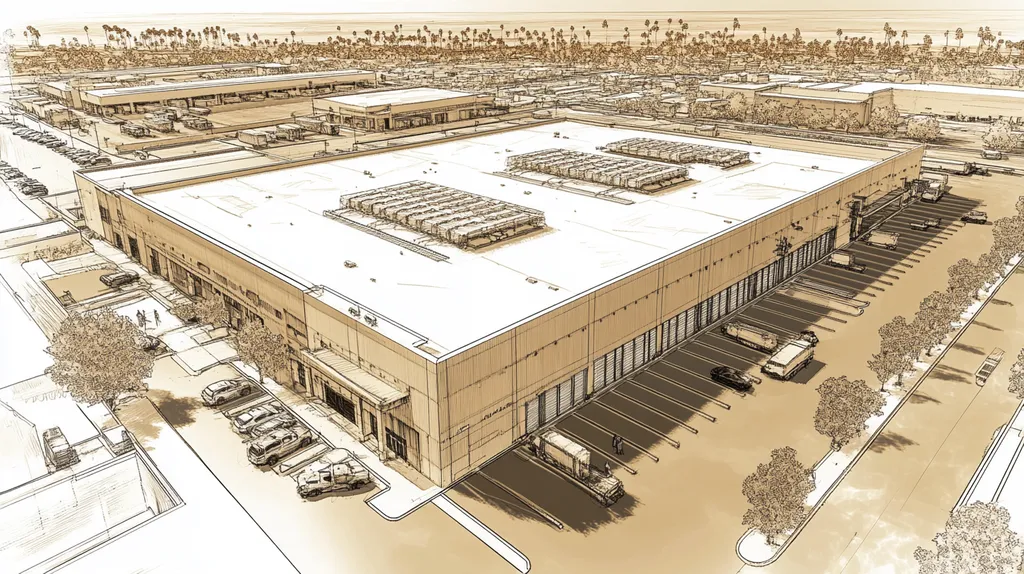In commercial roofing, where a single oversight can trigger hundreds of thousands in damage, traditional documentation practices are falling dangerously short. Industry data reveals that 85% of roof failures stem from inadequate evaluation records, yet most facilities still rely on outdated inspection methods.
From missing structural defects to overlooking energy efficiency opportunities, current documentation approaches leave property owners vulnerable to preventable costs and risks.
This analysis examines why established evaluation practices are failing, explores the systemic issues plaguing the industry, and presents data-driven solutions for enhanced roof documentation.
SECTION 1: CURRENT PRACTICES
For commercial property owners, grasping the condition of roofing systems is not merely important—it’s essential. The absence of reliable documentation can lead to unexpected roofing failures, resulting in expensive repairs or, worse yet, damage to the property. In fact, studies reveal that nearly 70% of premature roof failures are preventable with improved evaluation practices. This section delves into standard inspection checklists, commonly used evaluation methods, and the notable limitations of visual exams in the quest to assess roofing conditions accurately.
Standard Inspection Checklists
Standard inspection checklists are the bread-and-butter tools of the roofing industry, offering a systematic approach to evaluating flat and sloped roofs alike. While they certainly ensure key areas receive attention, they often lack the nuance required for a thorough understanding of a roof’s overall health.
These checklists typically cover key indicators such as surface wear, blisters, and water pooling—but they may neglect subtle signs of deterioration. For instance, hidden membrane failures can remain camouflaged, leading to unforeseen leaks and costly surprises. When property owners rely solely on checklists, it can create a false sense of security, with the assumption that completion equals compliance.
This assumption can be treacherous, as it may encourage property owners to overlook the critical importance of ongoing monitoring and documentation. In an industry where reliability is non-negotiable, falling back on checklists alone carries significant consequences.
Ultimately, while these checklists serve a purpose, they should be seen as just the tip of the iceberg in commercial roofing evaluations. Acknowledging their limitations is the vital first step toward enhanced roofing assessments.
Common Evaluation Methods
Beyond checklists, the roofing industry employs a variety of evaluation methods, such as thermal imaging, moisture surveys, and core sampling. Each technique has its unique advantages and drawbacks and serves distinct roles in assessing roof integrity.
Thermal imaging, for instance, can pinpoint temperature fluctuations that might indicate hidden moisture issues, but the results heavily depend on the operator’s skills. Similarly, moisture surveys can yield valuable insights, yet they’re often restricted to small areas, risking the oversight of widespread problems. As for core sampling, while it provides definitive proof of a roof’s composition, it can be invasive and potentially damaging to the roof’s surface.
Sadly, even these valuable evaluation methods can lead to fragmented assessments. Property owners may receive multiple reports that fail to stitch together a cohesive picture of their roofs’ overall condition. This fragmentation complicates informed decision-making and underscores the critical need for an organized documentation strategy.
Given these hurdles, it’s vital for property owners to assess how each evaluation method can collectively enhance their understanding of roof health. Integrating these diverse methods into a comprehensive documentation approach is essential for effective long-term maintenance and optimal roof performance.
Limitations of Visual Exams
Visual examinations are the most common first step in roofing assessments, yet they harbor significant drawbacks that can compromise their effectiveness. Many critical issues—think embedded moisture or concealed structural damage—can slip through the cracks during standard visual checks.
These assessments primarily focus on observable wear or damage, often glossing over subtle problems that could signal future failures. For instance, early signs of a roof leak might escape notice until significant damage has already occurred, sharply increasing repair costs and putting the integrity of the entire building at risk.
The subjective nature of visual exams presents another challenge. Different inspectors might possess varying thresholds for identifying issues, leading to inconsistencies in reporting that can confuse property owners. Such discrepancies can complicate long-term planning and budgeting, ultimately leading to misinformed decisions.
In conclusion, while visual examinations play an essential role, they shouldn’t stand alone in the evaluation process. A multifaceted approach, coupled with diligent documentation practices, can provide more reliable insights and better prepare property owners for the challenges of future evaluations.
SECTION 2: SYSTEMIC ISSUES
In the realm of commercial roofing, overlooking long-term performance can have dire consequences. Property owners entrust their roofs to withstand everything from torrential downpours to searing sun, yet many fall short in ensuring these shields are adequately evaluated for durability. According to the National Roofing Contractors Association, improper inspections and maintenance can waste as much as 30% of a roof’s lifespan. Ignoring this can lead to steep repair costs and safety risks that are simply avoidable.
Overlooking Long-Term Performance
Many property owners tend to prioritize quick fixes instead of considering the long-term health of their roofs. This short-sightedness can result in premature failures and unexpected leaks, which ripple through the entire building’s infrastructure. Statistics indicate that roofs often underperform long before their expected lifespan due to inadequate evaluation methods.
When property owners neglect the focus on long-term performance, they miss addressing critical issues like material fatigue and environmental wear. Ignoring these factors can inflate repair costs significantly over time, even jeopardizing structural integrity. A proactive strategy can lead to a much more sustainable roof lifespan.
Research shows that roofs with regular long-term assessments can perform better by an impressive average of five years compared to those without such foresight. It’s vital for property owners to adopt robust evaluation strategies that prioritize longevity.
Routine and thorough roof assessments should be established to catch lurking issues early. This proactive approach not only secures an investment but also bolsters overall building safety.
Inadequate Structural Integrity Assessments
Understanding a roof’s ability to withstand environmental stresses demands precise structural integrity assessments. Regrettably, many of today’s practices fall short, often failing to pinpoint these vulnerabilities. A survey by the Roofing Industry Committee on Weather Issues revealed that nearly 40% of roofs evaluated didn’t meet the necessary structural standards.
The risks of overlooking structural integrity can be severe. Poor assessments could lead to catastrophic failures, resulting in injuries or damage to property. Commercial property owners may find themselves facing not just financial loss but also legal repercussions due to such oversights.
Utilizing advanced assessment techniques like load testing and thermal imaging can unveil issues that common evaluations often miss. By integrating thorough structural assessments into routine practices, property owners gain crucial insight to guide decisions about repairs or replacements.
This proactive commitment can lead to substantial savings in long-term costs and greatly enhance safety.
Neglecting Maintenance Prioritization
In the commercial roofing realm, effective maintenance is frequently pushed aside due to a lack of thorough documentation and prioritization. This neglect often breeds a reactive cycle of upkeep, where issues are tackled only after they escalate. Research from the Roof Consultants Institute indicates that this unplanned maintenance can increase repair costs by as much as 50%.
Property owners often underestimate the value of regular maintenance, erroneously considering it an unnecessary expense. However, failing to engage in routine care can lead to significant long-term costs, including unforeseen repairs and even complete roof replacements.
A well-documented maintenance schedule is key to facilitating timely interventions and preventing minor issues from ballooning into significant problems. Prioritizing maintenance not only prolongs the roof’s life but also ensures compliance with warranty requirements, saving money in the long run.
Incorporating a strategic maintenance plan within overall roofing documentation is essential. This approach empowers property owners to make informed decisions about resource allocation, providing robust protection for their investments.
SECTION 3: MISSED OPPORTUNITIES
In the competitive world of commercial roofing, cutting corners can be costly. Property owners who disregard robust evaluations may find themselves facing unexpected repair bills and declining building performance. Alarmingly, reports suggest that poorly assessed roofs can incur an average increase of 15% in annual operational costs. This section explores the significant missed opportunities stemming from substandard documentation practices, particularly emphasizing comprehensive analysis, energy efficiency, and meticulous record-keeping.
Lack of Comprehensive Analysis
Many property owners overlook the critical importance of thorough roof assessments. A simplistic approach often misses vital issues such as structural vulnerabilities or hidden leaks. Take, for example, a flat-roofed facility that reports only minor surface cracks while ignoring deeper leaks that might compromise insulation and drive up energy costs.
Without meticulous documentation, proactive measures can become nearly impossible. Unattended problems can snowball, leading to urgent and costly crises, such as full roof replacements. A well-rounded analysis not only protects the property but also informs future maintenance strategies, creating a stronger defense against potential failures.
Furthermore, engaging in regular, detailed evaluations empowers owners and managers to make informed and strategic decisions. Rather than a one-and-done assessment, ongoing monitoring ensures roofing systems are continuously evaluated for performance. This proactive strategy can significantly extend a roof’s lifespan while enhancing overall building safety.
Thus, the absence of a clear, comprehensive analysis can yield costly oversights. Property owners should prioritize investing in full evaluations to unlock potential savings and avoid the pitfalls of neglected roofing systems.
Ignoring Energy Efficiency and Cost Savings
Commercial roofs often hide a golden opportunity for boosting energy efficiency. Overlooking this aspect can lead to spiraling utility expenses and a larger carbon footprint. For instance, roofs devoid of reflective coatings can absorb excessive heat, causing cooling costs to soar by an estimated 20% during peak seasons.
Embracing energy-efficient roofing systems can yield substantial financial benefits in the long run. Implementing solutions like cool roofing or solar panel integration often pays dividends through reduced energy bills. Yet, without reliable documentation, quantifying or prioritizing these advantages becomes a formidable challenge.
On top of that, neglecting energy efficiency could significantly impact a building’s marketability. As sustainability becomes an essential selling point, owners who invest in energy-efficient roofs enhance property value and attract environmentally conscious tenants.
In essence, disregarding energy efficiency within roof evaluations translates to letting significant savings slip through one’s fingers. By incorporating energy performance factors into assessment reports, property owners can better align roofing strategies with their financial objectives.
Underutilizing Detailed Documentation
It’s surprising how many property managers fail to grasp the strategic value of detailed roofing documentation. Incomplete or disorganized records can obstruct effective decision-making when it comes time for repairs or replacements. A lack of documented maintenance history may lead to misinformed evaluations, often resulting in unnecessary spending and frustration.
Moreover, having accurate documentation is vital for warranty claims and insurance matters. When files are insufficient, property owners risk weakening their claims, leaving themselves financially vulnerable. By maintaining up-to-date documentation, owners not only secure their investments but also maximize warranty benefits.
Effective documentation also improves communication with contractors. Comprehensive reports provide a clear snapshot of existing conditions, facilitating more accurate service proposals and work scopes. This clarity fosters stronger relationships and ultimately leads to better service outcomes.
Thus, the underutilization of detailed documentation signifies a considerable gap in current evaluation practices. Property owners must commit to creating, maintaining, and leveraging comprehensive roofing records to strategically enhance their roofing management efforts.
SECTION 4: ROOT CAUSES
The stakes in roofing evaluation practices are higher than many property owners realize. Shockingly, over 30% of commercial roof failures stem from inadequate inspections. This oversight can lead to eye-watering repair costs and long-term damage if not addressed. It’s essential to pinpoint the root causes behind ineffective evaluations to avert financial drain and ensure roofs remain steadfast guardians against the elements.
Inadequate Inspector Qualifications
One glaring issue in the industry is that many roof inspections are conducted by personnel who lack the necessary training. This deficiency can translate into significant oversights during evaluations. For example, an inexperienced inspector may overlook early signs of water infiltration, which could inevitably cost thousands in repairs down the line.
Though industry standards often call for certified inspectors, compliance is not universal across roofing companies. This inconsistency creates a dangerous false sense of security, leaving property managers blissfully unaware of lurking problems just waiting to pounce.
A trained inspector possesses the know-how to spot common roofing issues, from material degradation to inadequate ventilation. With their expertise, they can deliver a more precise assessment, minimizing future risks and costly surprises.
Investing in qualified personnel isn’t just about ticking boxes; it’s a proactive measure to preserve property value. Ultimately, property owners reap the benefits of thorough evaluations conducted by skilled professionals who know how to spot trouble before it starts.
Insufficient Pre-Inspection Preparation
Pre-inspection preparation is often the unsung hero in effective roofing assessments. When inspectors dive into evaluations without essential background information about the roof’s history, they can miss critical red flags. For instance, a roof that has weathered multiple leaks requires scrutinizing, but without proper prep, these histories could slip through the cracks.
Equipping inspectors with comprehensive documentation, including prior inspection reports and maintenance records, significantly enhances their ability to identify potential trouble areas. By knowing what issues have surfaced before, they can zero in on high-risk areas that demand attention.
Effective pre-inspection preparation isn’t merely a best practice; it’s a vital step that ensures inspectors come equipped to accurately assess the roof’s condition. This diligence can save property owners from costly repairs and extend the roofing system’s lifespan, ultimately reaping rewards for the building’s long-term health.
Poor Communication of Findings
Imagine receiving a report on your roof that reads like a page from a foreign manual—confusing and unhelpful. Clear communication of inspection findings is crucial for informed decision-making. Unfortunately, many reports are riddled with technical jargon that can leave property owners and facility managers scratching their heads.
A report that presents findings without actionable insights can lead property owners to underestimate the urgency of underlying issues. For example, if an inspector mentions “minor deterioration” but fails to elaborate, the gravity of the situation could be wildly misjudged.
To foster better communication, reports should break down findings into clear, digestible terms. Including visual aids like photos and diagrams provides a more intuitive understanding of the issues at hand. When findings are presented neatly, property owners are more likely to take the necessary actions promptly.
Establishing a channel for follow-up discussions is also effective in bridging communication gaps. This encourages a clearer understanding of the inspection implications while empowering property owners to make well-informed choices for their roofs.
DATA DRIVEN EVIDENCE
The repercussions of neglecting commercial roofing maintenance ripple far beyond aesthetics. In fact, statistics indicate that skipping regular upkeep can slice a roof’s lifespan by an alarming 40%. This not only leads to untimely replacements but also escalates repair expenses to painful heights. By scrutinizing these figures, we reveal the gaps in existing evaluation practices and underscore the urgent necessity for more rigorous documentation. This section will examine the statistical fallout from neglect, dissect the true costs of premature replacements, and spotlight success stories of effective assessment methodologies.
Statistical Impact of Neglecting Maintenance
Ignoring routine roof maintenance can unleash a cascade of serious consequences. The National Roofing Contractors Association reports that a staggering 30% to 50% of commercial roofing dilemmas arise from poor maintenance habits. This neglect often manifests as leaks, which can wreak havoc on the building’s structure and jeopardize valuable contents.
To put it into perspective, the National Association of Home Builders found that minor repairs can be managed for as little as $300. In stark contrast, major leaks can lead to costs soaring beyond $10,000. Such financial implications fiercely underscore the importance of proactive maintenance.
Additionally, roofs that benefit from diligent documentation and routine inspections can enjoy lifespans exceeding 25 years, while their neglected counterparts barely manage 15 years. This sharp difference further highlights the critical role that consistent maintenance plays in prolonging roof durability.
Regular assessments not only shield against immediate financial hits but also accumulate savings over the years. Well-maintained roofs are energy efficient, yet this cost-saving aspect is often scoffed at amidst more pressing concerns.
Cost Analysis of Premature Replacements
The financial strain of premature roof replacements is not to be underestimated. Research indicates that a neglected maintenance schedule can result in replacements that cost up to three times more than following a well-maintained roof lifecycle. This stark reality drives home the value of regular documentation.
Furthermore, a report from the Roofing Alliance reveals that companies frequently replacing roofs face rising insurance premiums, a consequence of the heightened risks associated with structural failures and liability claims.
Beyond direct financial implications, premature roof replacements can disrupt operations. For businesses, the downtime translates into lost revenue, adversely affecting profitability. Therefore, it’s crucial to take a holistic view of costs when making roofing decisions.
Investing in systematic documentation and maintenance can yield substantial long-term savings. Organizations that adopt proactive evaluation methods can potentially extend roof life by an additional decade, resulting in significant financial benefits.
Case Studies of Effective Assessments
Numerous commercial property owners’ experiences demonstrate the undeniable value of thorough roof assessments. A national retailer experienced a remarkable turnaround in roof management after adopting a documented maintenance strategy. This meticulous record-keeping allowed them to identify minor issues before they escalated, ultimately conserving valuable resources.
Another notable example involves a manufacturing facility that prioritized regular inspections and comprehensive documentation. By effectively communicating data to stakeholders, they secured the necessary funding for essential repairs, thus avoiding a costly premature roof replacement. This strategic approach saved the facility over $85,000.
Moreover, a multi-building campus implemented a technology-driven documentation system, which not only streamlined maintenance scheduling but also provided real-time data analysis for accurate forecasting of future roofing needs. The resulting maintenance performance exceeded expectations, all while keeping operational costs in check.
These case studies illustrate that effective assessments can lead to significant cost reductions and improved roof reliability. Prioritizing clear documentation practices empowers property owners to make well-informed decisions for superior roof management.
SECTION 6: ALTERNATIVE SOLUTIONS
The world of commercial roofing is changing rapidly, and staying ahead is not just wise—it’s imperative. With roofs often accounting for up to 25% of a building’s replacement costs, complacency can lead to financial pitfalls. By adopting proactive strategies, property owners can avoid the costly repairs or premature replacements that plague their peers. This section highlights smart, innovative solutions designed to enhance roof documentation and facilitate more effective future evaluations.
Implementing Comprehensive Condition Assessments
Comprehensive condition assessments take roof evaluation a step further by offering an all-encompassing view of a roof’s health. Rather than relying solely on visual inspections, these assessments blend various evaluation techniques. For example, moisture surveys can identify hidden leaks early on, preventing damage that could spiral out of control.
Regular condition assessments can uncover wear patterns and allow facilities managers to tackle issues proactively. In fact, property owners might save up to 30% on repair costs simply by catching potential problems early.
Moreover, these thorough assessments generate detailed records of each roof’s history, an invaluable resource for negotiating with contractors or filing insurance claims.
By prioritizing comprehensive assessments, property owners not only safeguard their investments but also extend the lifespan of their roofs. Ongoing evaluations ensure roofs remain not just functional but also efficient over time.
Utilizing Advanced Inspection Technologies
Advanced inspection technologies are revolutionizing the roofing evaluation process. Drones equipped with high-resolution cameras can swiftly capture detailed images of roof surfaces, making it easier to inspect otherwise hard-to-reach areas safely and effectively.
Infrared thermography, another powerful tool, detects temperature variations that indicate moisture problems lurking beneath roofing materials. This proactive strategy means timely repairs can be made, minimizing the risk of severe damage.
3D modeling software is also making waves by allowing property owners to visualize and plan necessary repairs. By integrating these innovative technologies, property owners gain a clearer and more nuanced understanding of their roof’s condition.
These advanced inspection tools not only enhance accuracy but also improve efficiency. With quicker evaluations, there is less disruption to building operations, allowing facility managers to keep business running smoothly.
Developing Strategic Roof Management Plans
Establishing strategic roof management plans is crucial for proactive maintenance and expense control. These plans define specific goals, timelines, and budgets concerning roof care, ensuring property owners are always aware of when inspections and maintenance are due—thus minimizing the risk of surprise issues creeping in.
Such plans should undergo regular updates based on assessment outcomes, keeping documentation current and useful for informed decision-making.
Additionally, incorporating sustainability initiatives into these management plans can enhance long-term roof performance. For instance, installing green roofing systems not only improves insulation but also contributes to lower energy costs, providing environmental and financial benefits.
Ultimately, strategic roof management fosters a culture of accountability and foresight. By emphasizing proactive care, property owners can mitigate risks and protect the value of their assets in the long run.
Moving Forward
The stakes couldn’t be higher for commercial property owners, with documented evidence showing that inadequate roof evaluations lead to $3.7 billion in premature replacements annually.
Traditional documentation practices, from basic checklists to fragmented inspections, are proving dangerously insufficient in an era where building sustainability and cost management are paramount.
The solution lies in embracing comprehensive documentation strategies that leverage advanced technologies, implement thorough condition assessments, and prioritize strategic maintenance planning.
Without this fundamental shift in approach, commercial properties will continue facing preventable failures, escalating repair costs, and shortened roof lifespans.
The time has come to retire outdated evaluation methods in favor of data-driven documentation practices that protect these vital assets for decades to come.
FREQUENTLY ASKED QUESTIONS
Q. Why are commercial roof evaluations essential?
A. Grasping the condition of roofing systems is crucial to prevent unexpected failures and costly repairs. Studies show that nearly 70% of premature issues are preventable with improved evaluation practices. Reliable documentation combined with evaluation methods will help property owners make well-informed choices.
Q. How can I ensure my industrial roof performs long-term?
A. Focusing on long-term performance through regular assessments and documentation is vital. Many roofs underperform due to neglecting critical factors like material fatigue. Establishing a proactive strategy allows you to catch issues early and significantly extend roof lifespan.
Q. What are the limitations of visual exams for my commercial roof?
A. Visual examinations often miss embedded moisture or concealed structural damage. These assessments typically focus on surface issues, potentially overlooking subtle signs that can lead to major repairs down the line. A more multifaceted approach is essential for reliable roofing insights.
Q. How do inadequate structural assessments affect my commercial roof?
A. Inadequate assessments can lead to costly roof failures and safety risks. Many roofs do not meet necessary structural standards, which can trigger far-reaching consequences. By using more thorough assessment techniques, property owners can identify vulnerabilities that might otherwise go unnoticed.
Q. What is the cost impact of neglecting roof maintenance?
A. Neglecting routine maintenance can reduce a roof’s lifespan by up to 40%. Minor repairs can be managed for a fraction of the cost compared to extensive damages from leaks, which can soar beyond $10,000. Regular documentation and maintenance save property owners both headaches and money.
Q. How can advanced technologies enhance roof evaluations?
A. Advanced technologies like drones and infrared thermography provide detailed roof condition analysis. These tools allow for quick, accurate inspections of hard-to-reach areas and can detect hidden moisture problems. Thus, employing these innovations leads to timely repairs, minimizing the risk of severe damage.
Q. What is the role of strategic roof management plans?
A. Strategic roof management plans outline goals, timelines, and budgets for roofing care. They ensure regular assessments are conducted, preventing issues from emerging unexpectedly. By integrating sustainability initiatives, these plans enhance overall roof performance while minimizing long-term costs and risks.


